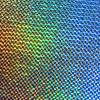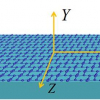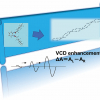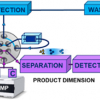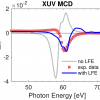
Vacuum ultraviolet (VUV) light is useful in a broad range of research fields, but its generation has been difficult and expensive. Researchers have now created a new device to efficiently generate this special kind of light using an ultrathin film with nanoscale perforations.
For VUV light to be truly useful, it also needs to be circularly polarised. Existing methods to produce VUV, such as using particle accelerators or laser-driven plasmas, have many drawbacks, including cost, scale and complexity. But also, these can only produce linear polarised VUV. If there was a simple way to make circular polarised VUV, it would be extremely useful. Assistant Professor Kuniaki Konishi from the Institute for Photon Science and Technology at the University of Tokyo and his team may have the answer.
“We have created a simple device to convert circularly polarised visible laser light into circularly polarised VUV, twisted in the opposite direction”, said Konishi. “Our photonic crystal dielectric nanomembrane (PCN) consists of a sheet made from an aluminium oxide-based crystal (γ-Al2O3) only 48 nm thick. It sits atop a 525 µm-thick sheet of silicon which has 190 nm-wide holes cut into it 600 nm apart.”
“When pulses of circularly polarised blue laser light with a wavelength of 470 nm shine down these channels in the silicon, the PCN acts on these pulses and twists them in the opposing direction”, said Konishi. “It also shrinks their wavelengths to 157 nm which is well within the range of VUV that is so useful in spectroscopy.”
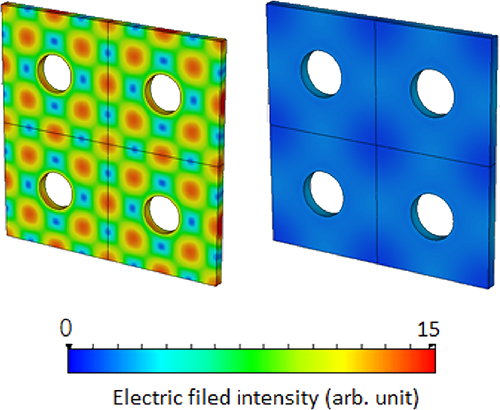
Spacing matters. The device’s effectiveness relies heavily on the spacing of the holes. In this simulation, holes 600 nm apart (left) provide far greater results than holes 500 nm apart (right). Image © 2020 Konishi et al.
With short pulses of circularly polarised VUV, researchers can observe fast or short-lived physical phenomena at the sub-µm scale that are otherwise impossible to see. Such phenomena include the behaviours of electrons or biomolecules. So, this new method to generate VUV can be useful to researchers in medicine, life sciences, molecular chemistry and solid-state physics. Although a similar method has been demonstrated before, it produced less useful longer wavelengths, and did so using a metal-based film which is subject to rapid degradation in the presence of laser light. PCN is far more robust to this.
“I am pleased that through our study of PCN, we found a new and useful application for circularly polarised light conversion, generating VUV with the intensity required to make it ideal for spectroscopy”, said Konishi. “And it was surprising that the PCN membrane could survive the repeated bombardment of laser light, unlike previous metal-based devices. This makes it suitable for lab use where it may be used extensively over long periods. We did this for basic science and I hope to see many kinds of researchers make good use of our work.”
This work has been published in Optica.




